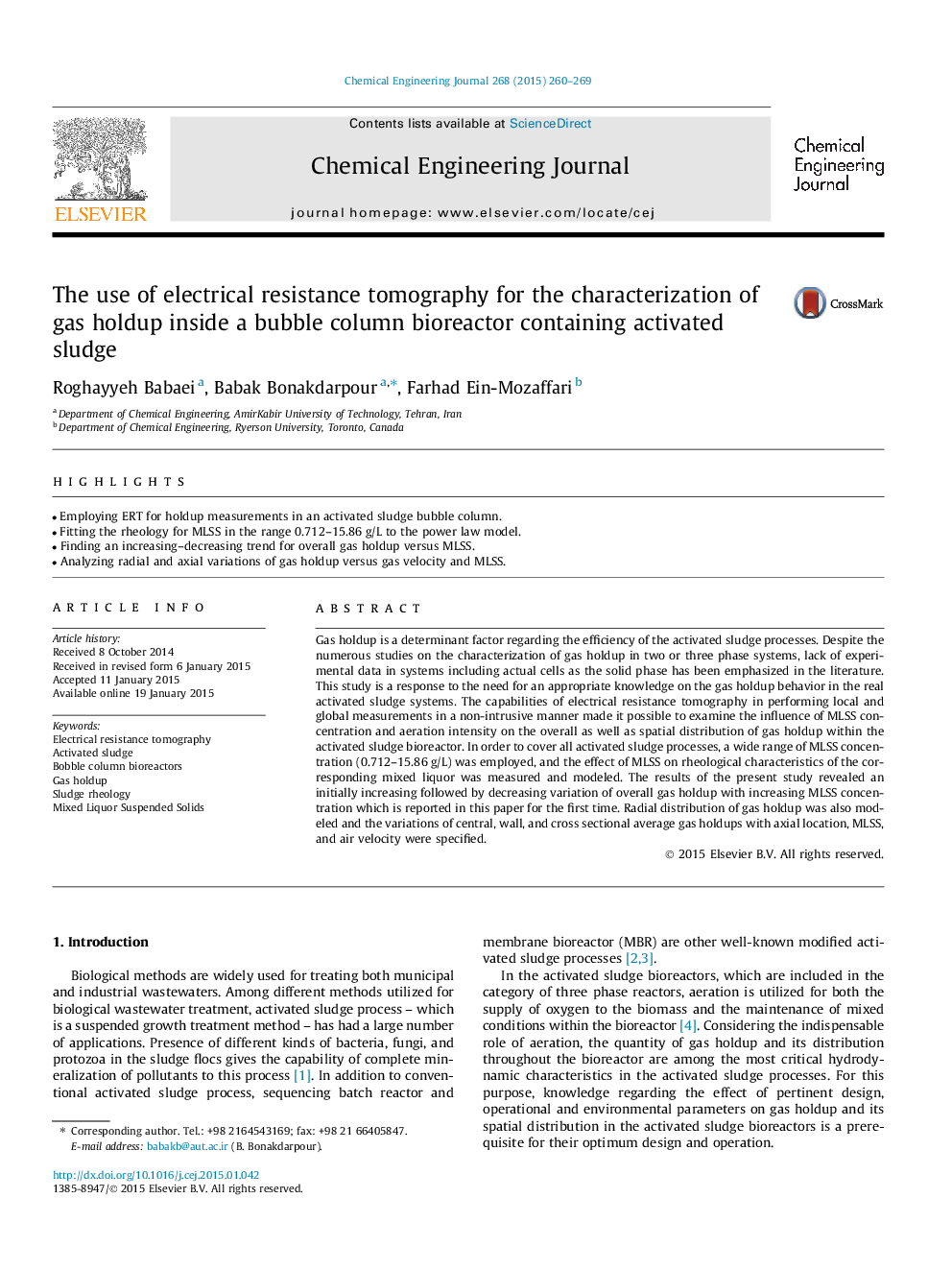| Article ID | Journal | Published Year | Pages | File Type |
|---|---|---|---|---|
| 146571 | Chemical Engineering Journal | 2015 | 10 Pages |
•Employing ERT for holdup measurements in an activated sludge bubble column.•Fitting the rheology for MLSS in the range 0.712–15.86 g/L to the power law model.•Finding an increasing–decreasing trend for overall gas holdup versus MLSS.•Analyzing radial and axial variations of gas holdup versus gas velocity and MLSS.
Gas holdup is a determinant factor regarding the efficiency of the activated sludge processes. Despite the numerous studies on the characterization of gas holdup in two or three phase systems, lack of experimental data in systems including actual cells as the solid phase has been emphasized in the literature. This study is a response to the need for an appropriate knowledge on the gas holdup behavior in the real activated sludge systems. The capabilities of electrical resistance tomography in performing local and global measurements in a non-intrusive manner made it possible to examine the influence of MLSS concentration and aeration intensity on the overall as well as spatial distribution of gas holdup within the activated sludge bioreactor. In order to cover all activated sludge processes, a wide range of MLSS concentration (0.712–15.86 g/L) was employed, and the effect of MLSS on rheological characteristics of the corresponding mixed liquor was measured and modeled. The results of the present study revealed an initially increasing followed by decreasing variation of overall gas holdup with increasing MLSS concentration which is reported in this paper for the first time. Radial distribution of gas holdup was also modeled and the variations of central, wall, and cross sectional average gas holdups with axial location, MLSS, and air velocity were specified.
